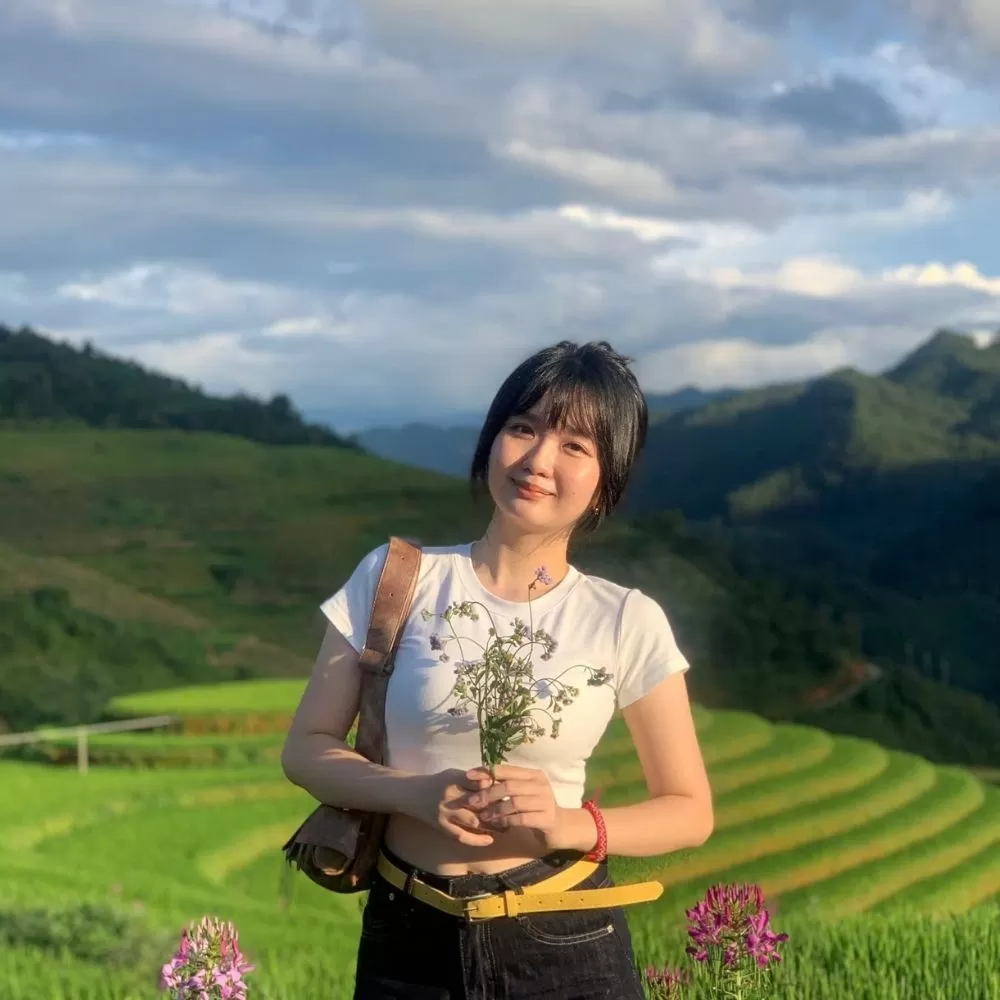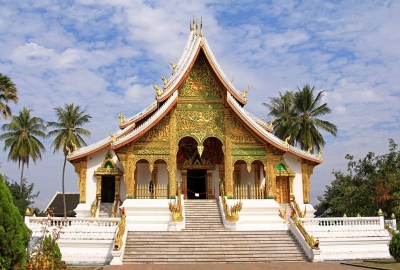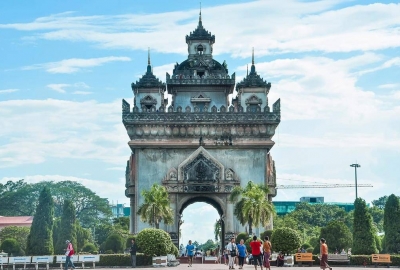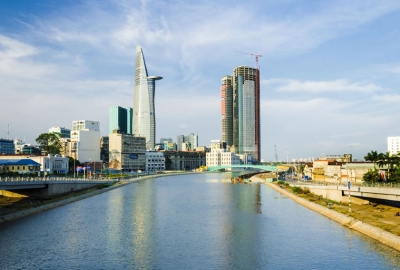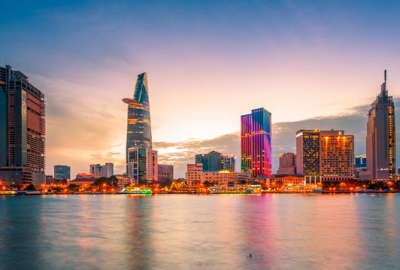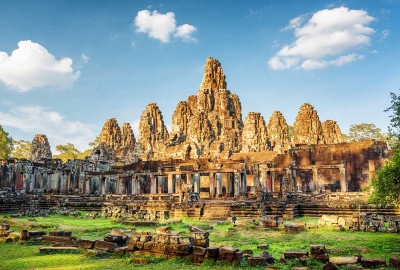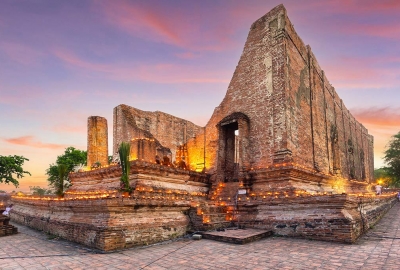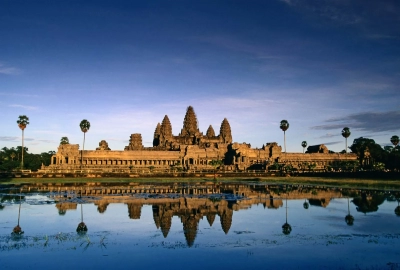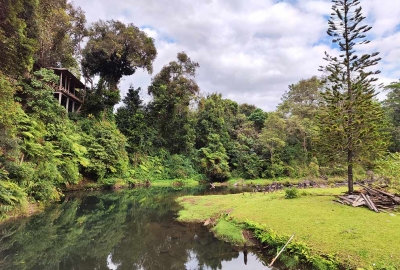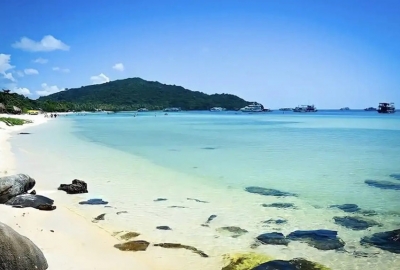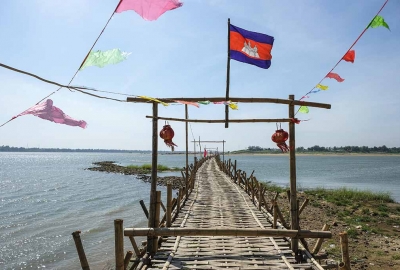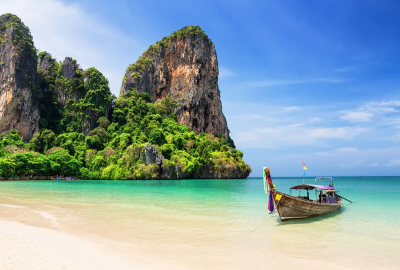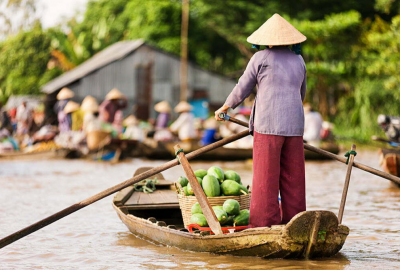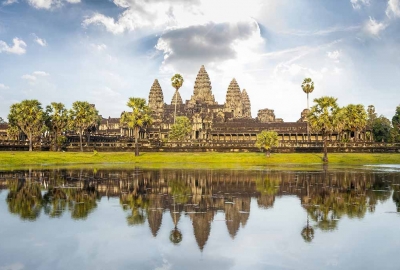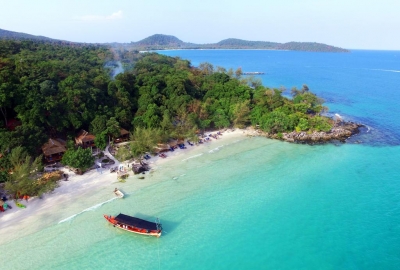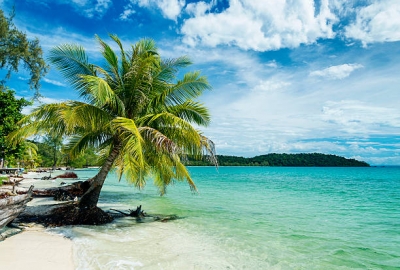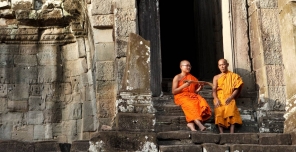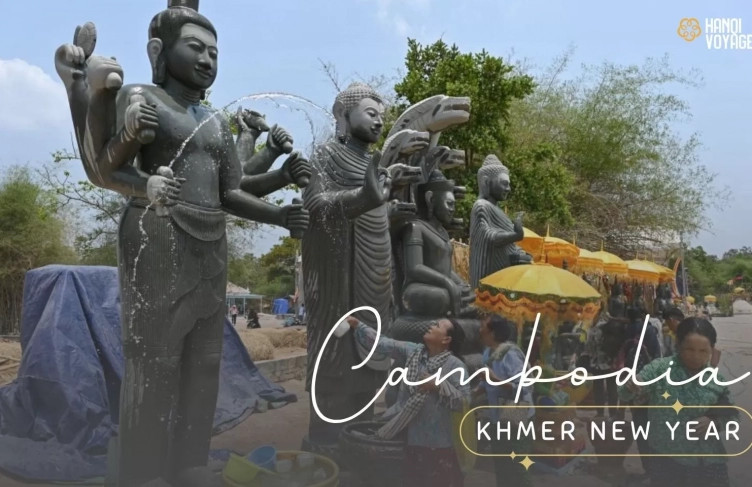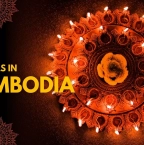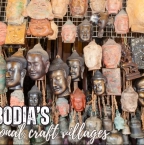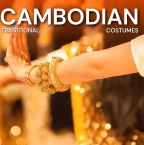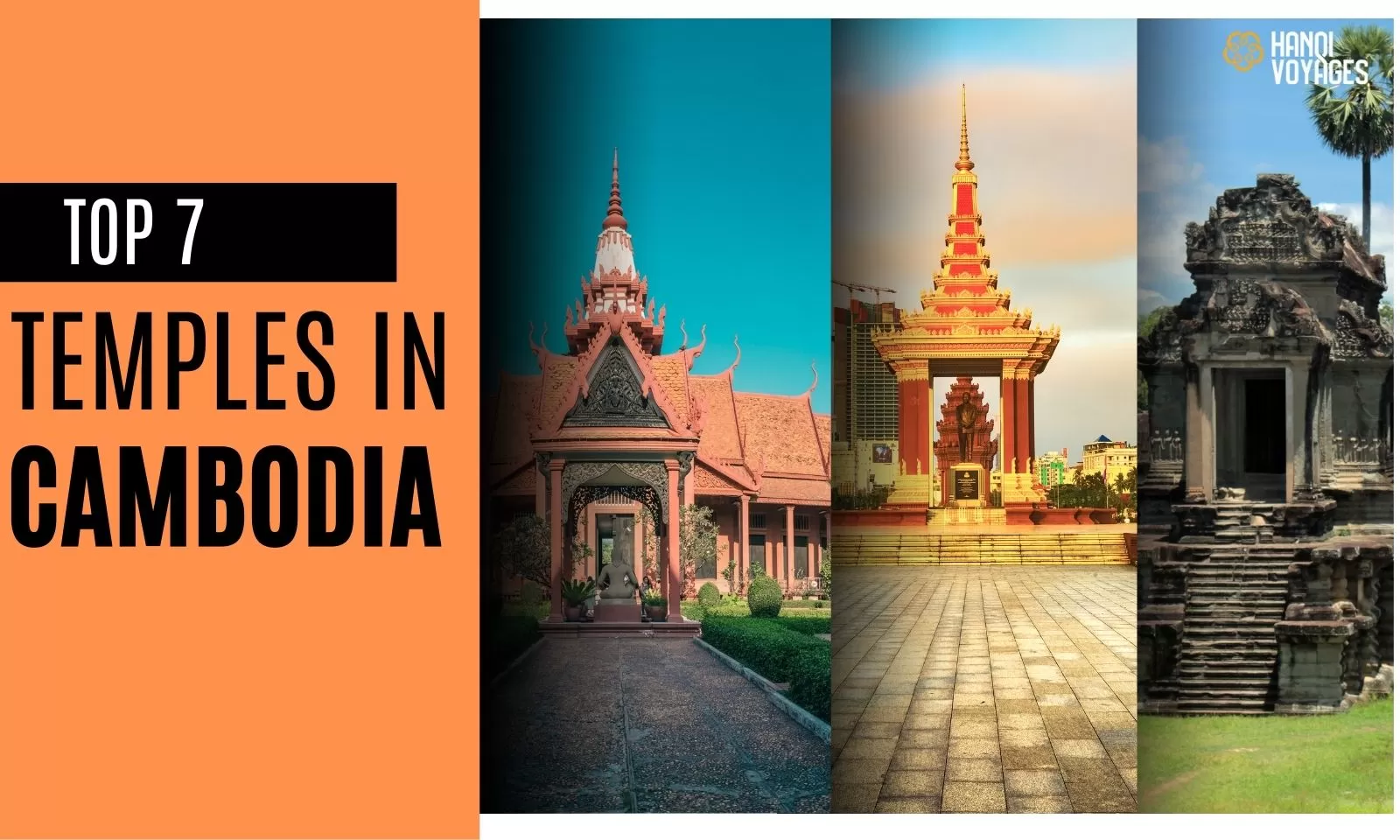
Top 7 temples in Cambodia not to be missed
Discover 7 temples in Cambodia that should be on your itinerary. Admire intricate carvings, impressive architecture, and sacred spaces that reflect centuries of devotion. Each site offers a unique experience, making your journey truly unforgettable.

Cambodia is home to remarkable temples, each with its own story and architectural charm. These sacred sites showcase intricate carvings, impressive structures, and centuries of devotion. Walking through temple grounds, you’ll discover fascinating details that reflect the artistry and beliefs of past civilizations. Whether you seek spiritual insights or admire ancient craftsmanship, the temples in Cambodia offer an experience unlike any other.
Explore these must-visit sites with Hanoi Voyages and start planning your journey today!
Table of Contents
- Why are temples in Cambodia considered architectural wonders?
- Top 7 ancient temples in Cambodia you shouldn’t miss
- Angkor Wat - The most iconic landmark of Cambodia
- Bayon Temple - The temple of mysterious stone faces
- Ta Prohm - The temple embraced by nature
- Neak Pean - The sacred temple on a tranquil lake
- Banteay Srei - A masterpiece of intricate sandstone carvings
- Preah Vihear - The cliffside temple with a majestic view
- Preah Khan - A vast temple with historical significance
- Unique experiences when visiting temples in Cambodia
- Essential tips for visiting temples in Cambodia
Why are temples in Cambodia considered architectural wonders?
The temples in Cambodia are known for their detailed carvings, grand layouts, and historical significance. Built during the height of the Khmer Empire, these structures represent the finest examples of Khmer temple architecture. Many of them feature towering spires, elaborate bas-reliefs, and precise construction techniques that continue to impress visitors today. Some are well-preserved, while others are partially reclaimed by nature, adding to their unique appeal.
These temples were not only places of worship but also centers of political and cultural influence. Many were built to honor Hindu gods before later being converted into Buddhist sites. The transition between these two religions is reflected in the carvings and statues found throughout the temple complexes.
Top 7 ancient temples in Cambodia you shouldn’t miss
There are countless ancient temples in Cambodia, each with its own history and significance. Some impress with intricate carvings, while others captivate with their remote and peaceful settings. Among them, a few stand out for their architectural details, religious importance, and unique atmosphere. Below are 7 of the best temples to visit in Cambodia, each offering a different experience.
Angkor Wat - The most iconic landmark of Cambodia
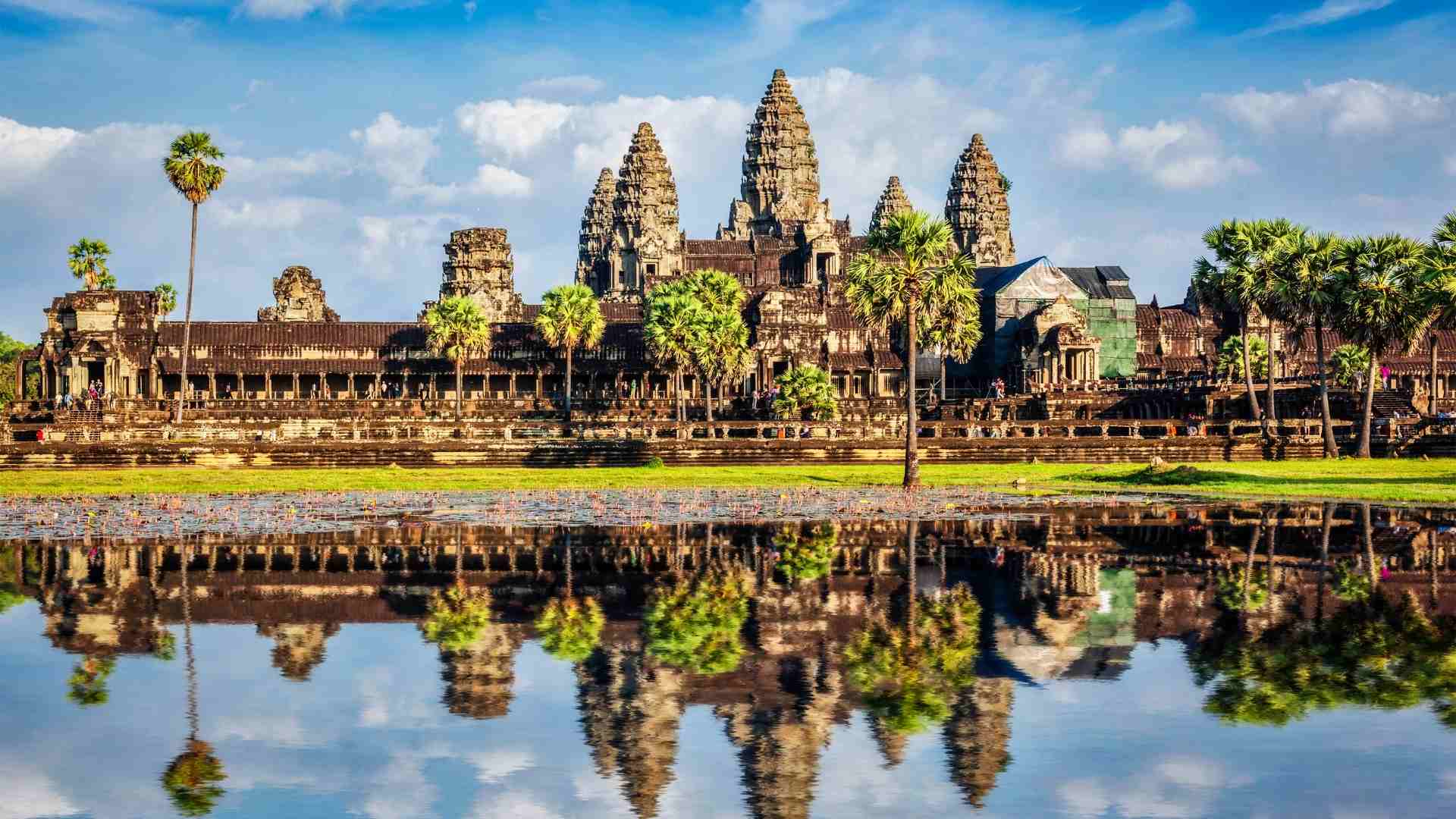
Location: Angkor Archaeological Park, Siem Reap
Ticket price: $37 USD for 1-day pass, $62 USD for 3-day pass, $72 USD for 7-day pass
Opening time: 7:30 AM - 5:30 PM
Angkor Wat is the most well-known of all temples in Cambodia, serving as the national symbol. Built in the 12th century under King Suryavarman II, it was originally dedicated to Vishnu before becoming a Buddhist site. Covering over 160 hectares, Angkor Wat is the largest religious monument in the world.
The temple’s design is a prime example of Khmer temple architecture, featuring five towers representing the peaks of Mount Meru. Long corridors adorned with bas-reliefs depict scenes from Hindu mythology, including the famous Churning of the Ocean of Milk.
A visit to Angkor Wat isn’t complete without experiencing sunrise at the site. The temple’s silhouette reflected in the surrounding moat creates a view that draws travelers from all over the world.
👉 Explore more: Discover Angkor Wat Cambodia: Best time to visit & what to see
Bayon Temple - The temple of mysterious stone faces
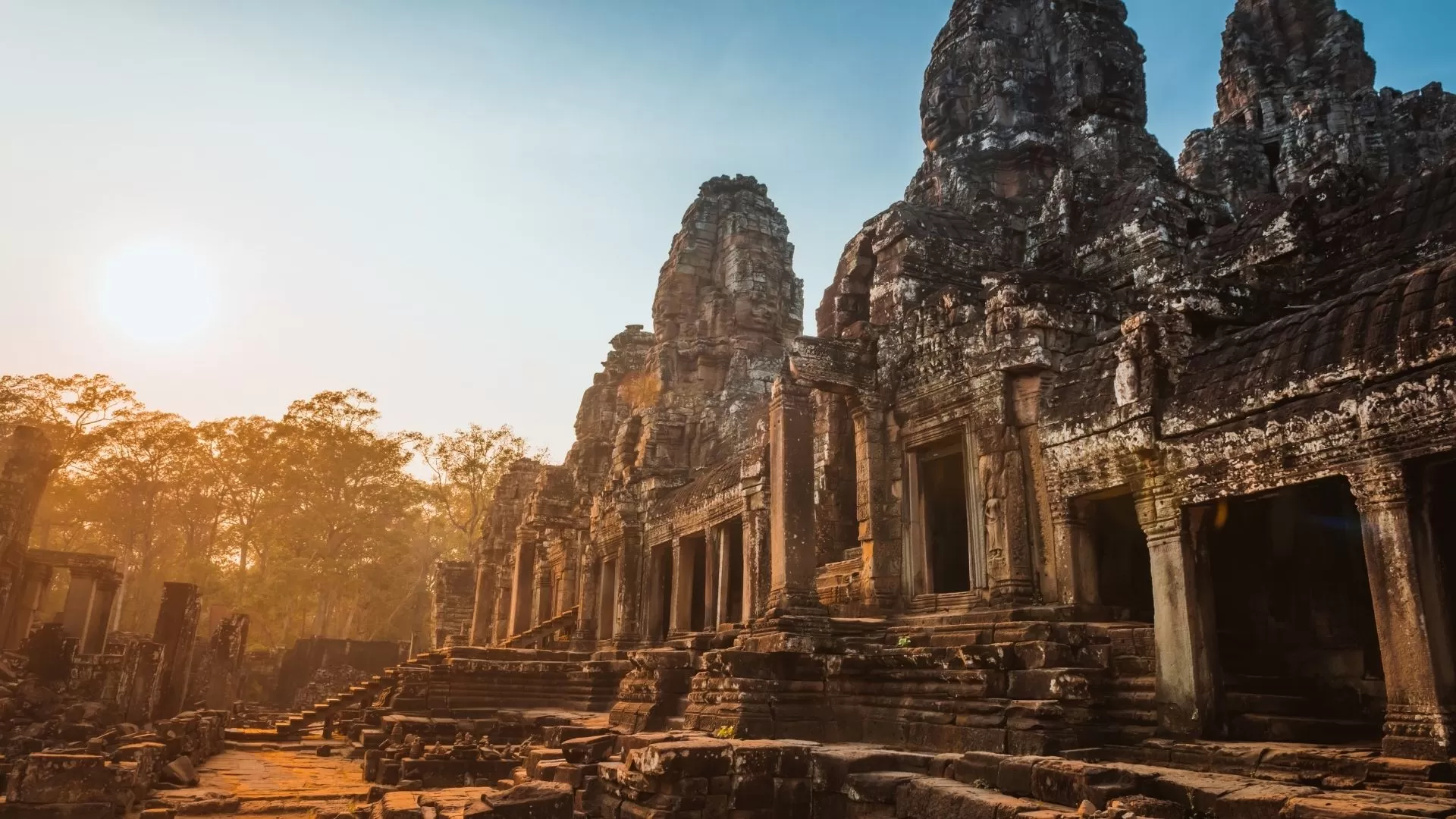
Location: Angkor Archaeological Park, Siem Reap
Opening time: 7:30 AM - 5:30 PM
Situated in the heart of Angkor Thom, Bayon Temple is an architectural masterpiece known for its towering structures adorned with enigmatic faces. Built in the late 12th century during the reign of King Jayavarman VII, this state Buddhist temple reflects both the spiritual and political strength of the Khmer Empire.
Its unique design features 54 towers decorated with a total of 216 serene faces, often associated with King Jayavarman VII or the bodhisattva Avalokiteshvara. These gently smiling expressions, sometimes referred to as the "Khmer smile," create an atmosphere of mystery and reverence. The temple's bas-reliefs depict historical battles, religious ceremonies, and everyday life, offering a deep connection to Cambodia’s past. Unlike the structured layout of Angkor Wat, Bayon’s maze-like corridors and hidden chambers make it feel like a journey through history carved in stone.
Ta Prohm - The temple embraced by nature
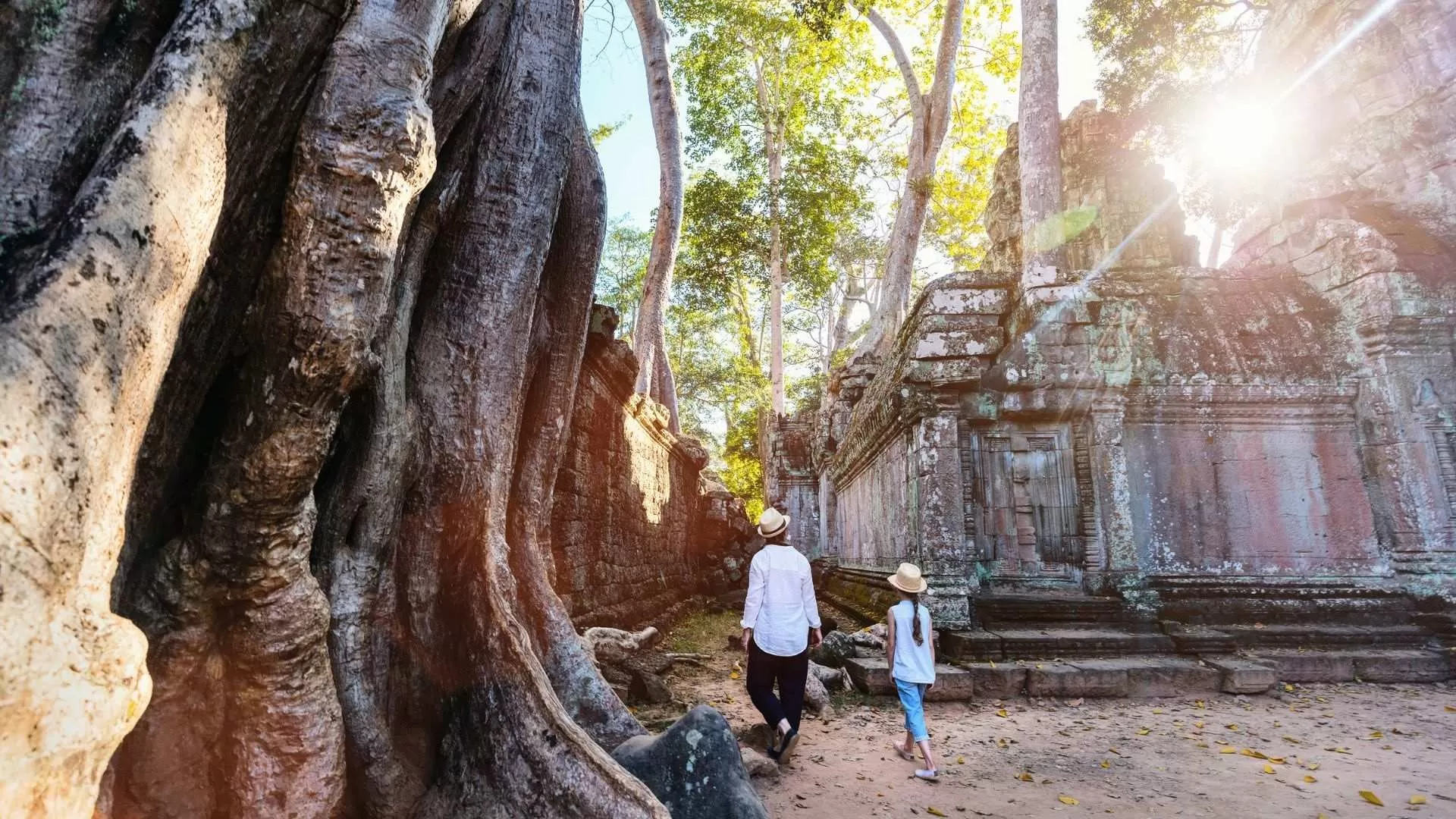
Location: Angkor Archaeological Park, Siem Reap
Opening time: 7:30 AM - 5:30 PM
Ta Prohm stands out among ancient temples in Cambodia due to its atmospheric ruins intertwined with massive tree roots. Built in the late 12th century as a Buddhist monastery, it was largely abandoned for centuries, allowing the jungle to reclaim much of the structure.
Visitors often find the contrast between man-made architecture and natural elements fascinating. The temple is particularly popular due to its appearance in films, including Tomb Raider. Despite its partially collapsed state, Ta Prohm remains one of the most visited temples in Cambodia, drawing those who appreciate its unique setting.
Neak Pean - The sacred temple on a tranquil lake
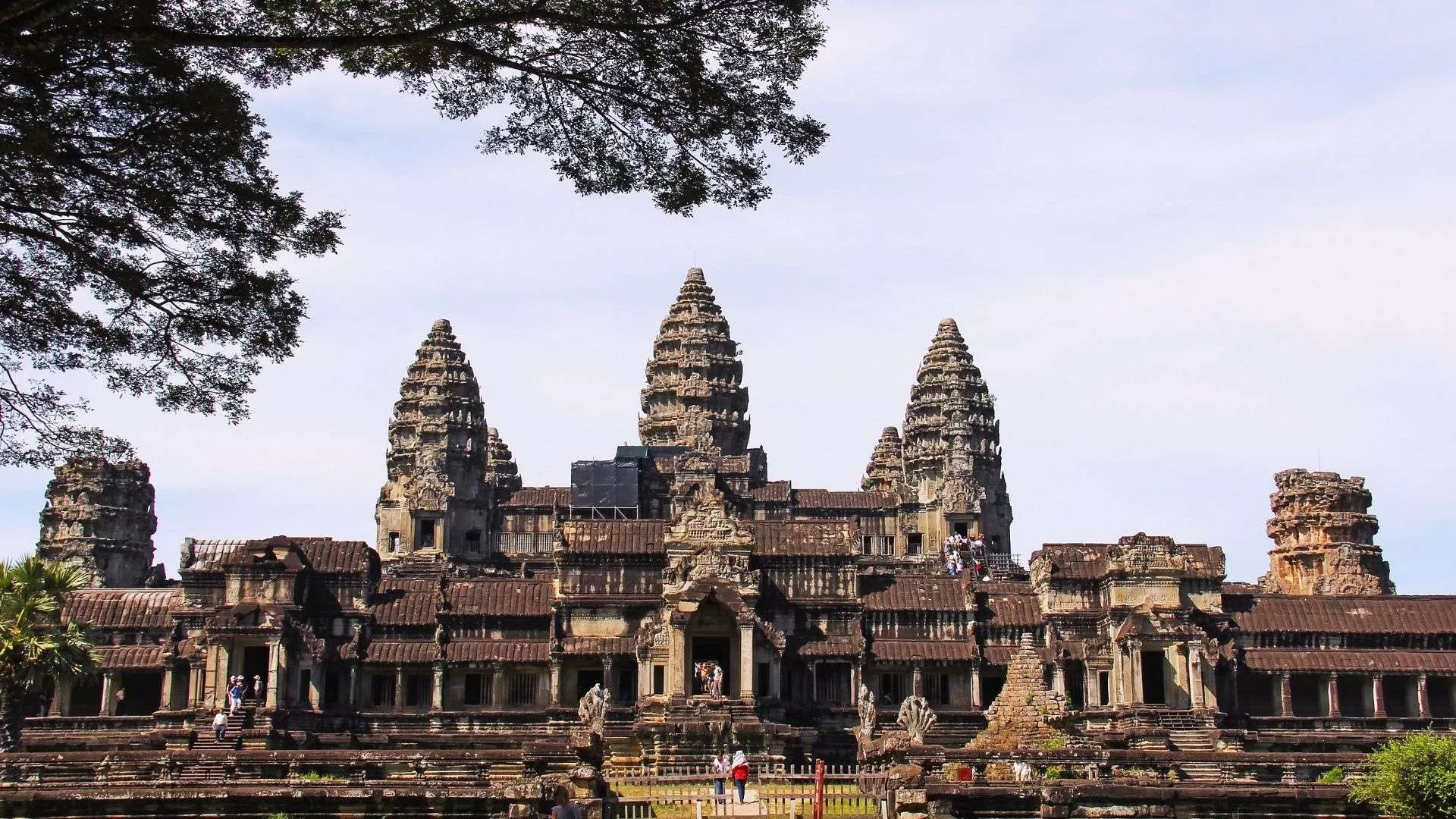
Location: Angkor Archaeological Park, Siem Reap
Opening time: 7:30 AM - 5:30 PM
Built in the 12th century under King Jayavarman VII, Neak Pean sits on an artificial island in a large reservoir. Designed for spiritual purification, its layout symbolizes Mount Meru, surrounded by four pools representing the elements.
At the center, a tower with intertwined naga sculptures stands as the temple’s focal point. Visitors reach Neak Pean by crossing a wooden bridge over calm waters, adding to its peaceful charm. Though smaller than other temples in Cambodia, it offers a quiet retreat for those seeking a serene atmosphere.
Banteay Srei - A masterpiece of intricate sandstone carvings
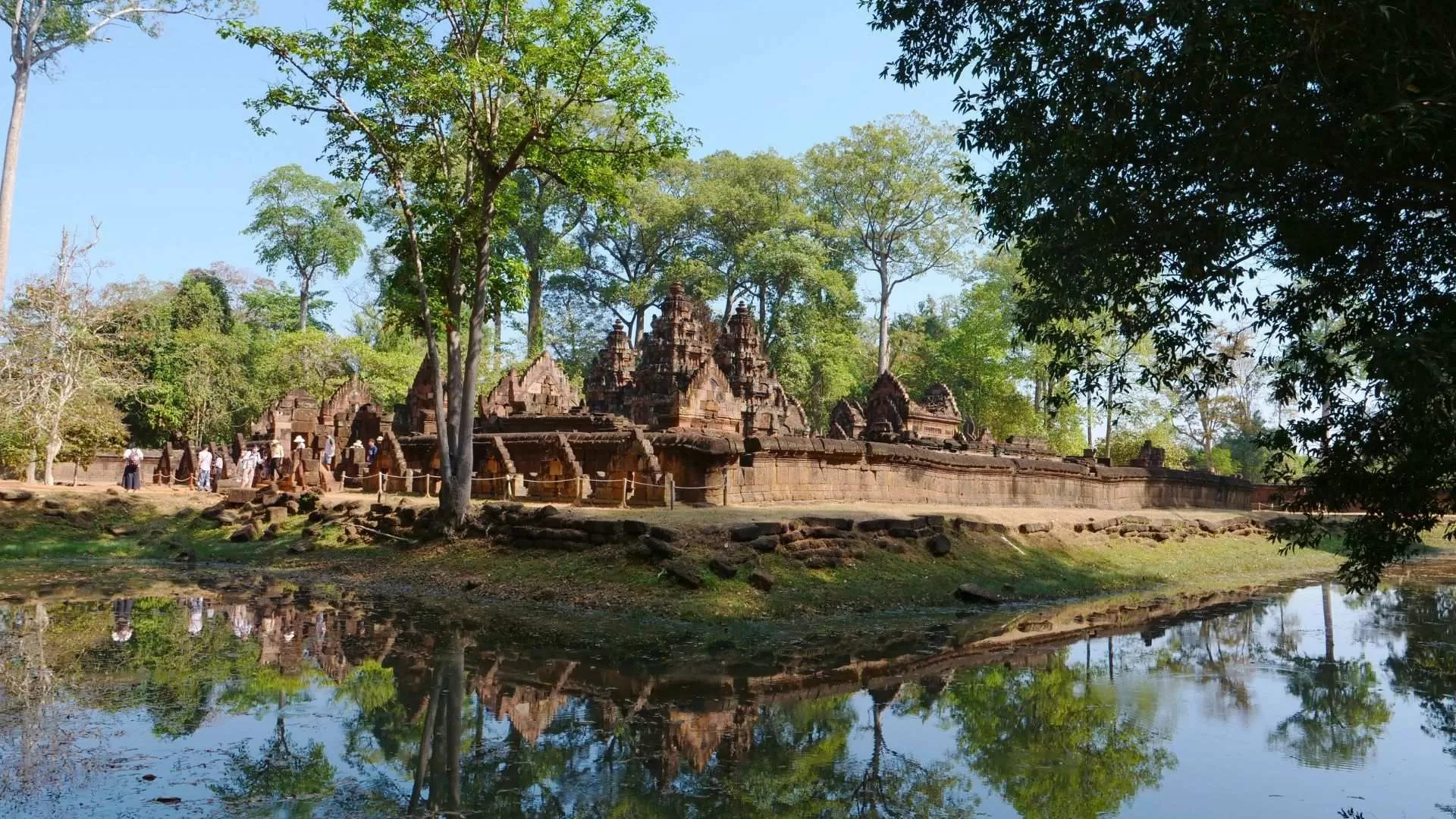
Location: 25 km north of Angkor Wat, Siem Reap
Opening time: 7:30 AM - 5:30 PM
Nestled deep within the Cambodian landscape, Banteay Srei is a remarkable example of ancient craftsmanship, known for its finely detailed pink sandstone carvings. Built in the 10th century, this temple stands out for its meticulously crafted bas-reliefs, depicting mythological scenes with exceptional precision.
Often referred to as the "Citadel of Women," its name is linked to the delicate nature of its carvings, which some believe required an extraordinary level of skill. The temple’s refined design and elaborate decorations create a distinctive setting, particularly during sunrise and sunset when the warm hues of the stone become even more pronounced.
Although smaller in scale compared to other sites, Banteay Srei captivates visitors with its intimate charm and exceptionally well-preserved details, making it an essential stop for those interested in Khmer art and history.
Preah Vihear - The cliffside temple with a majestic view
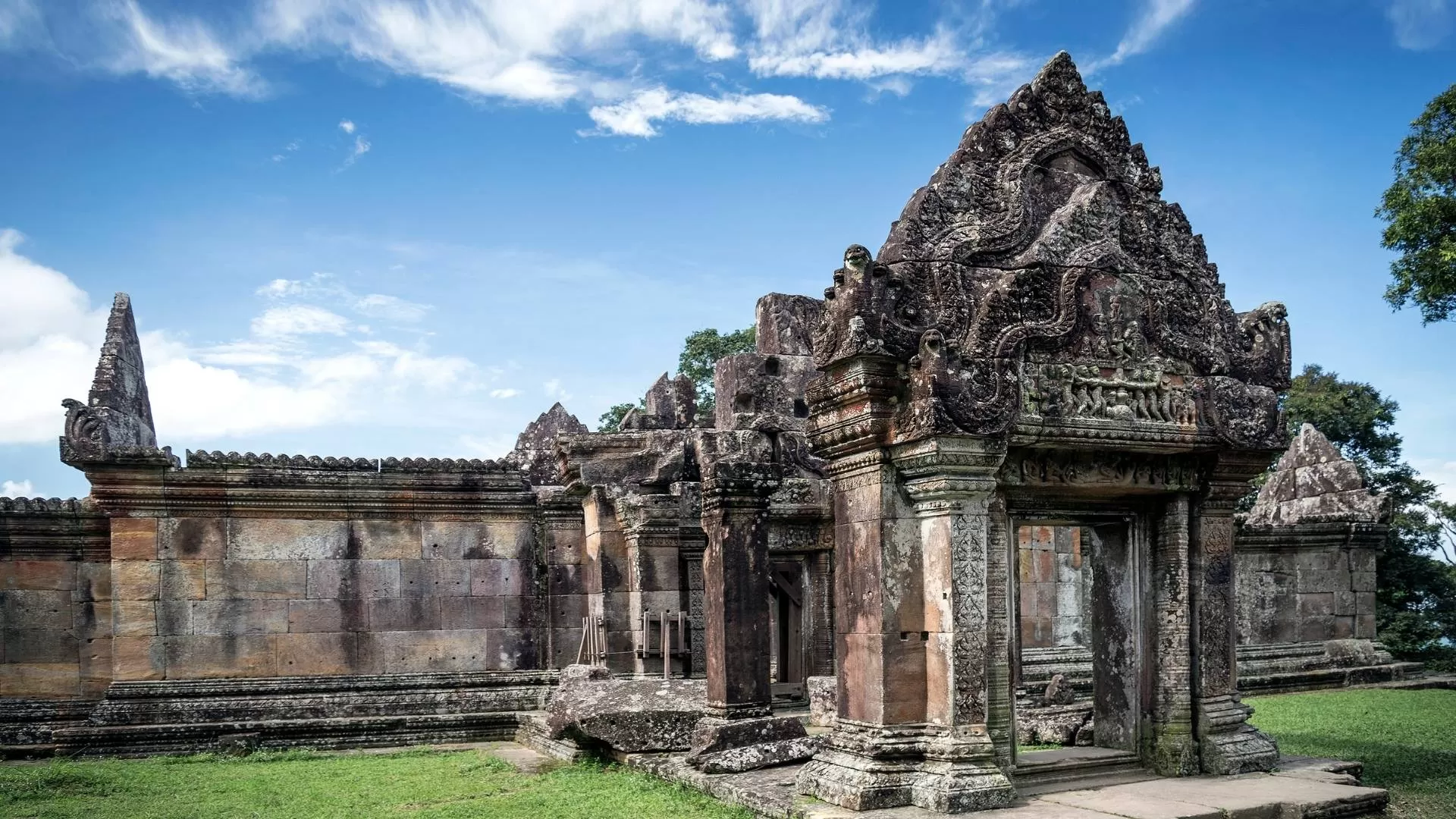
Location: Preah Vihear Province, near the Cambodia-Thailand border
Ticket price: $10 USD
Opening time: 7:00 AM - 5:00 PM
Preah Vihear is one of the most dramatic religious sites in Cambodia, perched on a cliff near the Cambodia-Thailand border. Its elevated location provides panoramic views of the surrounding landscape, creating a striking backdrop for its ancient structures.
Built over several centuries, Preah Vihear features a series of staircases, courtyards, and sanctuaries that reflect the architectural styles of different periods. Its remote location means it receives fewer visitors than other well-known sites, allowing for a quieter exploration of its well-preserved details.
Preah Khan - A vast temple with historical significance
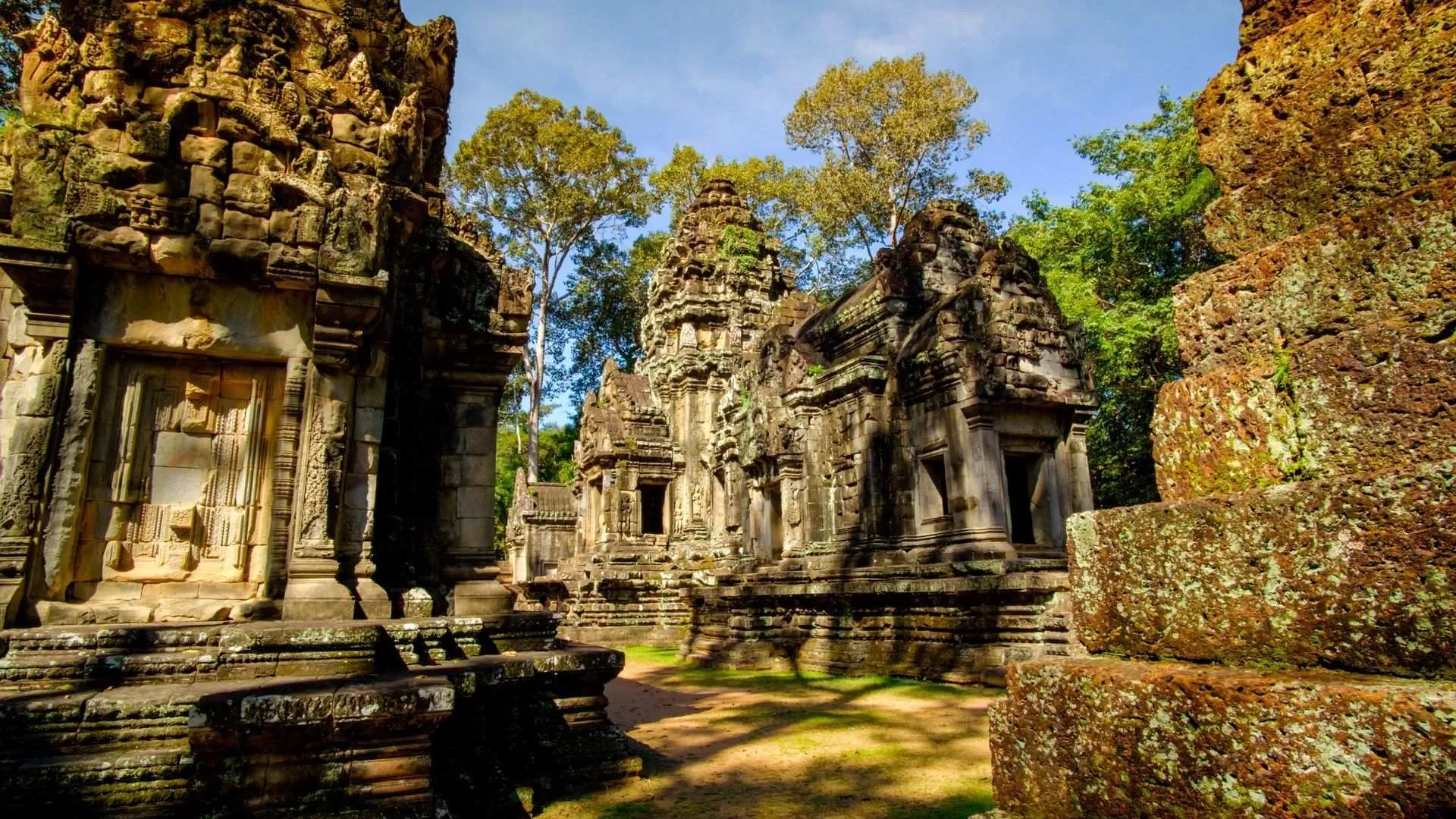
Location: Angkor Archaeological Park, Siem Reap
Opening time: 7:30 AM - 5:30 PM
Preah Khan is one of the largest temple complexes in the region, originally serving as a monastery and educational center. Built by King Jayavarman VII in honor of his father, it showcases a blend of Hindu and Buddhist influences in its design and carvings.
The site contains an intricate network of passageways, courtyards, and chambers, some of which remain partially covered in vegetation. Walking through its corridors offers a glimpse into the past, as each structure reveals a different aspect of its rich history.
Hanoi Voyages offers tours throughout Cambodia, giving you the chance to experience unique temples |
At Hanoi Voyages, we offer a variety of exciting Cambodia tour packages tailored to your preferences. CHOOSE AN IDEA, and we will plan your trip together
If you want to design a trip that perfectly suits your preferences, contact us now to begin planning your Cambodia trip! |
Unique experiences when visiting temples in Cambodia
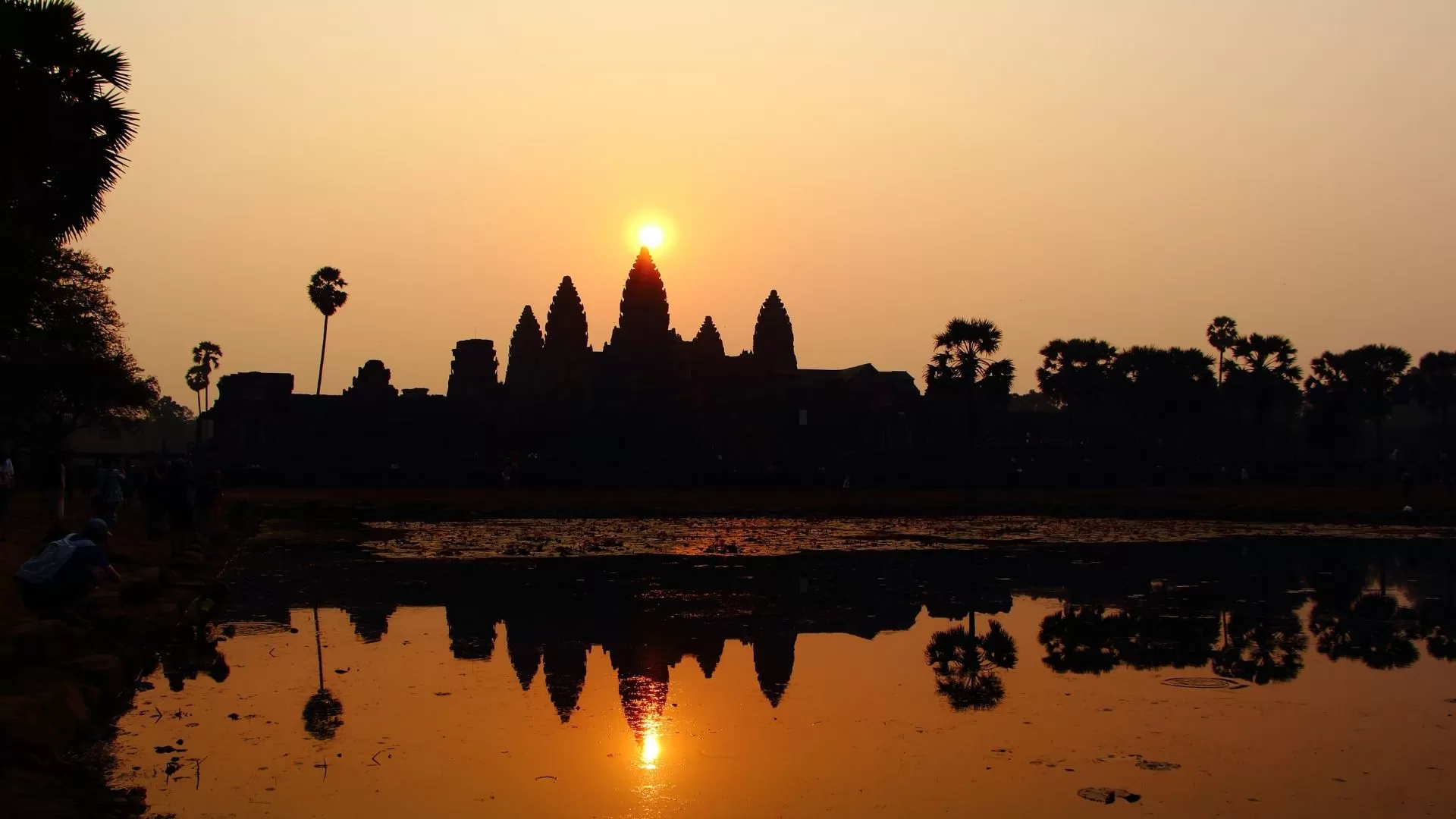
Visiting temples in Cambodia offers more than just admiring ancient ruins—it is a chance to step into a world of spiritual traditions and architectural marvels. Each temple reflects the ingenuity of Khmer temple architecture, with intricate carvings and impressive structures that have stood for centuries. The surrounding landscapes add to the atmosphere, creating a setting that encourages exploration and reflection.
Experience a sunrise at Angkor Wat: Watching the first rays of sunlight illuminate this grand temple is a moment that stays with visitors long after their trip.
Take part in temple rituals: Offering incense, receiving a monk’s blessing, or observing local religious practices brings a deeper connection to the sites.
Explore the natural surroundings: The massive tree roots embracing Ta Prohm and the tranquil waters of Neak Pean create a striking blend of architecture and environment.
Learn about history and mythology: A knowledgeable guide can share insights into the reign of King Jayavarman VII and the legends etched into temple walls.
Capture memorable photographs: The detailed stone carvings, shifting light, and surrounding landscapes provide the perfect backdrop for striking images.
Try local dishes near the temples: After exploring, enjoy traditional Cambodian food such as fish amok, kuy teav (noodle soup), or num banh chok (Khmer noodles) at eateries near temple sites.
Essential tips for visiting temples in Cambodia
Exploring these sacred sites is a unique experience, but proper preparation can make your trip more enjoyable and respectful. From dressing appropriately to staying hydrated, a few simple steps can enhance your visit. Consider these tips for visiting temples in Cambodia to ensure a smooth and meaningful exploration of these sacred sites.
Dress modestly: Many temples are active religious sites, so wearing clothes that cover shoulders and knees is recommended. Lightweight, breathable fabrics are ideal for Cambodia’s warm climate.
Start early: Arriving in the morning helps avoid crowds and the intense midday heat. Early visits also provide better lighting for photography and a more peaceful atmosphere.
Stay hydrated: Exploring temple complexes can take hours, so carrying a reusable water bottle is essential. Some temples have vendors nearby, but it’s best to bring your own supply.
Hire a guide: A knowledgeable guide can provide insights into the history, symbolism, and significance of each temple, making your visit more meaningful. Many guides speak multiple languages and can tailor the experience to your interests.
Follow temple etiquette: Show respect by speaking quietly, not touching carvings, and removing shoes before entering sacred areas. Avoid climbing on structures, as this can cause damage to centuries-old stonework.
Whether you are passionate about history, a photography enthusiast, or simply a traveler seeking remarkable sights, temples in Cambodia offer an unforgettable experience. Each site unveils a unique aspect of the country’s heritage, blending spirituality with architectural grandeur. For a journey tailored to your interests, let Hanoi Voyages create an itinerary that ensures a deeper connection with these magnificent temples. Let the ancient wonders of Cambodia leave a lasting impression on your travels!
Dream about your trip to Asia, in private
We are here to make it happen with youFREE QUOTE, WITHOUT OBLIGATION

